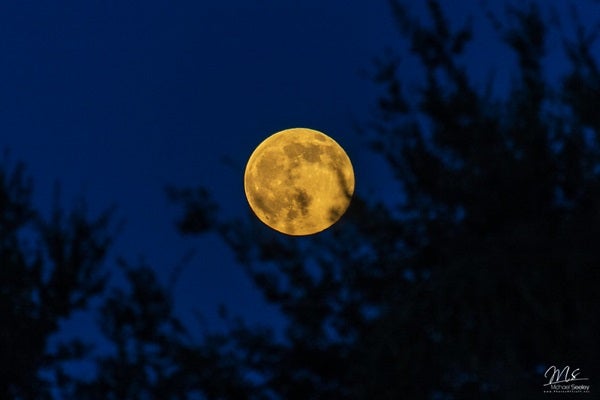
The Large Magellanic Cloud (LMC) is a dwarf galaxy orbiting our galaxy with a mass about 1% of the Milky Way. A dwarf galaxy perhaps twice as large as the Grand Galaxy, called Loki, may have merged with the Milky Way early in our galaxy’s history, a new study says. Credit: ESO/VMC survey
The Milky Way galaxy has had a violent history. It did not grow through simple, calm accretion, but rather through the aggressive mergers of multiple smaller galaxies. Recently, a team of astronomers found the remains of what is perhaps the oldest merger, right in our stellar neighborhood.
The stars of the Milky Way have a wide variety of ages, sizes, and abundances of metals (elements heavier than hydrogen or helium). Stars that are born together tend to share many properties, because they all come from the same cloud of primordial gas. But even though stars may be born together, they quickly disperse as they wander along their orbits. So astronomers turn to subtle differences like the abundance of metals to help them pinpoint distinct populations. And it is through this technique that astronomers can find populations of stars that were not born in our galaxy, but instead made the journey during a violent merger event.
In an article recently appeared on arXiv preprint server, a team of astronomers studied a curious population of 20 stars currently orbiting near the Sun. Unlike the Sun, however, these stars have almost no metals. This means that the stars are incredibly old. Because heavy elements come from fusion within stars, many cycles of stellar life and death are required to accumulate metals in new generations.
While these stars don’t have many metals, they do have some, all in roughly the same quantities, indicating that they share a common origin.
However, half of the stars orbit in one direction around the Milky Way, while the other half have opposite orbits.
Detective work
Puzzle pieces in place, researchers set to work to make sense of it all. First, these stars are much older than typical stars in the Milky Way’s disk, indicating that they probably were not born in our galaxy. Simulations of the evolution and distribution of elements within galaxies suggest that the most likely birthplace of these stars would have been a small dwarf galaxy, weighing no more than about 2% of the current mass of the Milky Way.
The universe has many creative ways to produce heavy elements: giant stars that explode in a supernova at the end of their lives, neutron stars that merge, and white dwarfs that accumulate enough material to explode in their own type of supernova. The particular mix of heavy elements that astronomers found in the stellar population suggests that they were enriched by the explosions of giant stars and the merger of neutron stars, but not by the explosions of white dwarfs. This means that the parent galaxy of the stars had a very short and extreme life, with a lot of star formation (and star death) without enough time for the white dwarfs to go supernova.
Astronomers have nicknamed the parent galaxy of these intruding stars Loki, after the trickster god of Norse mythology. While it’s difficult to pinpoint the exact moment Loki and the Milky Way merged, researchers can turn to another clue: the fact that these stars don’t all share the same direction in their orbits.
To explain that strange behavior, Loki must have merged with the Milky Way very early in its history, well before our galaxy developed its own disk of stars that mostly share a common orbital direction. When the galaxies merged, Loki’s stars scattered in all directions.
Considering that the Milky Way began merging around 10-11 billion years ago, this would make Loki potentially one of its earliest merger encounters, and this strange population of 20 stars one of the oldest remaining populations left in the galaxy.
It is through this type of detective work that astronomers are reconstructing not only Loki’s story, but all the mergers leading up to our galaxy today.

